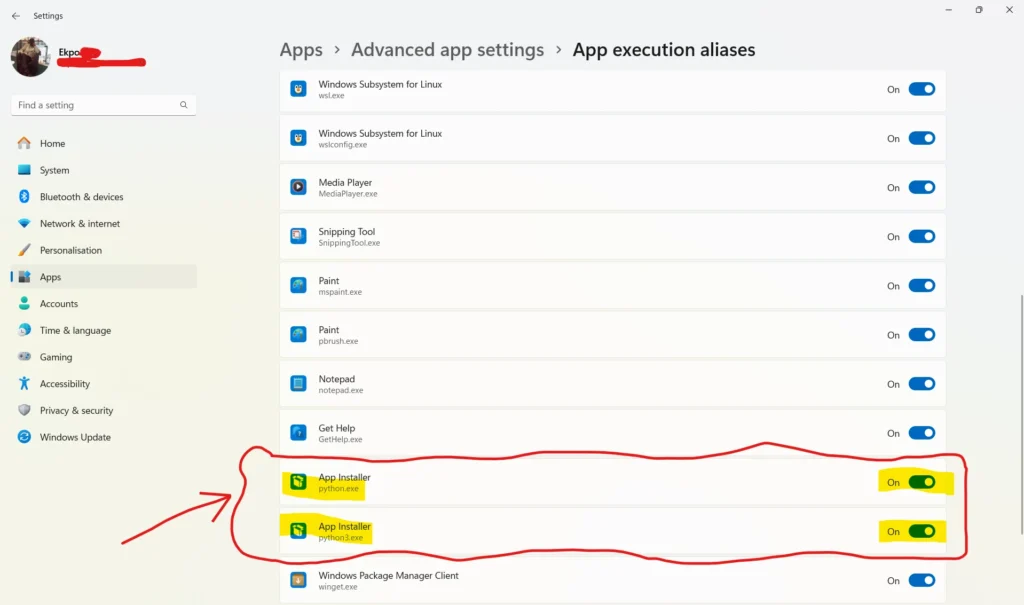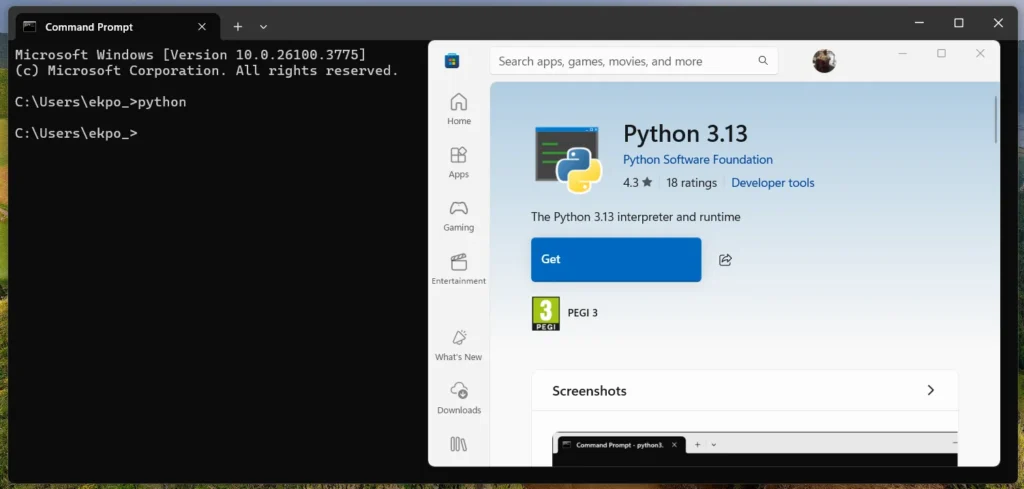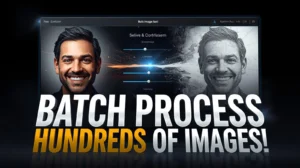Why Is python.exe in C:\Users\<username>\AppData\Local\Microsoft\WindowsApps When You Have Not Yet Installed Python?

Have you ever searched your Windows 10 or Windows 11 computer for Python and discovered a python.exe file in a mysterious folder—even though you never installed Python yourself?
You’re not alone. On freshly installed Windows 10 and 11 systems, it’s common to stumble upon a Python executable in a path like:
C:\Users\<YourUsername>\AppData\Local\Microsoft\WindowsApps\
This discovery often leads to confusion, suspicion of malware, or at least curiosity: Why is Python there if I didn’t install it?
In this article, I will try my best to demystify this behaviour.
- Why Is python.exe in C:\Users\\AppData\Local\Microsoft\WindowsApps When You Have Not Yet Installed Python?
- 1. Introduction
- 2. Understanding WindowsApps and App Execution Aliases
- 3. Why python.exe Appears Without Manual Installation
- 4. What Happens When You Run It?
- 5. How to Install the Real Python
- 6. How to Disable the Stub or Alias
- 7. Should You Be Concerned?
- 8. Conclusion
- Frequently Asked Questions (FAQs)
1. Introduction
Microsoft has integrated subtle changes in how app execution works in Windows 10 and 11. One of these changes involves using execution aliases, allowing certain commands (like python) to prompt app installations via the Microsoft Store. See Figure 2 below.
This convenience can cause confusion, especially for developers or curious users browsing system files.
Let’s explore what’s going on behind the scenes.

2. Understanding WindowsApps and App Execution Aliases
2.1 What is WindowsApps?
The folder:
C:\Users\<YourUsername>\AppData\Local\Microsoft\WindowsApps
is a special directory used by Windows to store links (or stubs) to Microsoft Store apps and execution aliases.
Note: It’s usually included in the system
PATH, meaning you can run apps from this directory from any Command Prompt or PowerShell window.
2.2 What Are Execution Aliases?
Execution aliases are placeholder executables that serve as launchers or install triggers for applications that can be downloaded from the Microsoft Store – see Figure 2.
For example:
python.exepython3.exenode.exe
These files don’t contain the actual application—they’re small stub executables.
3. Why python.exe Appears Without Manual Installation
When Microsoft introduced Python as a Microsoft Store app, they also included a stub executable named python.exe in the WindowsApps directory.
3.1 Purpose of the Stub

The stub exists so that if you type python in a command prompt without having Python installed, it will redirect you to the Microsoft Store to download and install Python – see Figure 3.
This helps:
- Encourage using the Microsoft Store version of Python.
- Simplify installation for new users.
- Improve onboarding for developers.
Illustrative Example:
Open Command Prompt and type:
pythonIf Python isn’t installed, it will open the Microsoft Store with the Python app page, as seen in Figure 3.
4. What Happens When You Run It?
If you run python.exe from that path (or just python from CMD/Powershell), here’s what happens:
- The stub checks whether a valid Python installation exists.
- If not, it prompts you with the Microsoft Store to install Python.
- If Python is installed from another source (e.g., python.org), it may conflict or override this stub based on your
PATHsettings.
4.1 Behavior with Official Python Installed
If you’ve installed Python via python.org:
- The installation places the real
python.exein:C:\Users\<YourUsername>\AppData\Local\Programs\Python\Python3x\ - That path is added to your
PATHenvironment variable beforeWindowsApps, so the real Python is executed first.
5. How to Install the Real Python
In order to install “the Real Python” or “Native Python” on your Windows machine, you have two main options:
Option 1: Microsoft Store (Easy)
- Type
pythonin CMD - Click the prompt to open the Microsoft Store
- Install Python from there
Pros: Easy setup
Cons: Limited customization, may lag behind python.org releases
Option 2: Python.org Installer (Preferred for Devs)
- Visit: https://www.python.org/downloads/
- Download the installer (e.g.,
python-3.x.x-amd64.exe) - Run the installer
- Check the option to “Add Python to PATH”
- Complete the setup
6. How to Disable the Stub or Alias
If you want to remove or disable the Store-triggering alias:
6.1 Disable App Execution Aliases
- Open Settings → Apps → Advanced App Settings → App Execution Aliases – you should see a screen that looks like that shown in Figure 2.
- Scroll to
python.exeandpython3.exe - Toggle them off
6.2 Remove from PATH (Optional)
- Open System Properties → Environment Variables
- Edit the
PATHvariable - Remove or move:
C:\Users\<YourUsername>\AppData\Local\Microsoft\WindowsAppslower in the list (not recommended unless necessary)
7. Should You Be Concerned?
No, this is a standard behavior in modern Windows versions.
It’s not malware. It’s not a hidden installation. It’s a convenience feature Microsoft included to help people install Python quickly.
However, developers and advanced users often prefer a manual installation for greater control and flexibility.
8. Conclusion
I believe the above information have been helpful to you regarding “why is python.exe in WindowsApps without Installing Python” or why python.exe is found in C:\Users\\AppData\Local\Microsoft\WindowsApps even when you have not yet installed Python on your new Windows 10/11 machine. In summary, I will like to bring this article to a close with the following list of conclusion:
python.exeinWindowsAppsis a stub from Microsoft for redirecting users to install Python via the Store.- It appears even if Python hasn’t been manually installed.
- You can safely ignore it, use it, or disable it based on your preferences.
This feature simplifies Python onboarding for beginners but may confuse those expecting a full installation.
Frequently Asked Questions (FAQs)
Q1: Is the python.exe file in WindowsApps a virus?
No. It’s a legitimate Microsoft-provided executable used to trigger the installation of Python via the Microsoft Store.
Q2: Can I delete the python.exe stub?
You shouldn’t try to manually delete it. Instead, disable the execution alias via Settings > App Execution Aliases.
Q3: I installed Python from python.org, but python still opens the Microsoft Store. Why?
You likely need to adjust your system’s PATH variable so that the directory containing the real Python installation comes before WindowsApps.
Q4: How do I check which Python is being used?
Run:
where python
This shows all locations of python.exe found in your system PATH.
Q5: Should I use the Microsoft Store version of Python?
For basic use or scripting, it’s fine. For development, it’s often better to use the version from python.org or via tools like pyenv or Anaconda.




